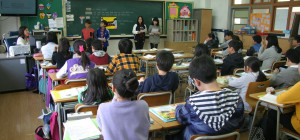As a teacher, you are responsible for the children in your care as well as their academic and social growth. Teachers work hard to meet the academic needs for their students with lesson plans, activity plans and working to conquer classroom management, but there are a few things that can't be planned for. Accidents happen in the classroom all the time, and teachers are the only adults in the classroom that can respond to the needs of the kids.
In addition to worrying about academics, teachers need to be ready to deal with accidents, injuries, and other medical issues that can happen at school. Teachers are constantly keeping up their teaching licenses and attending classes to stay up-to-date with new methods and curriculum, but it can be easy to forget to brush up on child safety skills.
 With each classroom comes a new set of issues. Every year a teacher gets a new set of students, new IEPs to address, and new problems to face. It is always a good idea to refresh your knowledge so you are prepared when there is an accident or emergency.
With each classroom comes a new set of issues. Every year a teacher gets a new set of students, new IEPs to address, and new problems to face. It is always a good idea to refresh your knowledge so you are prepared when there is an accident or emergency.
Diabetes
The school should be informed of a student with diabetes. This condition can be a reason for an IEP or 504 plan that outlines the teacher's role in the student's day-to-day management of their diabetes. Each case of diabetes is different, but there are some general ways teachers can be prepared to help the child manage their situation.
Blood sugar can be affected by stress, food, exercise, insulin or other changes in routine. Younger students may need subtle reminders of their snack time. Allow students to eat snacks whenever they feel their blood sugar is low. The student should have the necessary snacks, but it is always a good idea to keep some back up foods, such as juice or crackers, in case of an emergency. Always bring a snack for the student when leaving the classroom for an assembly, fire drill, field trip, etc.
Children with diabetes should have free use of the bathroom. When glucose levels are high, using the restroom is often an easy way to eliminate extra glucose. For this reason, it is a good idea for the student to keep a water bottle at their desk.
Finally, keep communication open with parents. If there are special school events or parties where treats are involved, let the parent know ahead of time. In most cases the snack can be worked into the child's meal plan. Helping parents plan ahead for classroom activities can keep the student from being singled out as a diabetic.
Epileptic Seizures
Students with epilepsy, a condition causing reoccurring seizures, are often taking medications to prevent episodes from happening. However, there are occasions when students experience seizures at school that can vary from smaller absent seizures to grand-mal seizures. They can be scary to deal with, but if you are prepared it will be easier to keep everyone calm.
If a student has a seizure, keep calm. Reassure everyone that the child will be fine in a minute. Ease the child gently to the floor and clear the area around her of anything that could hurt her. Put something flat and soft (like a folded jacket) under her head so it will not bang against the floor as her body jerks. Turn her gently onto one side to keep her airway clear and allow any fluid in her mouth to drain. Do not try to force her mouth open, hold on to her tongue, put anything in her mouth, or restrain her movements. Finally, when the seizing movements stop, let the child rest till full consciousness returns.
Accidents and Injuries
You can't plan for every situation in the classroom, but you can still be prepared. Students have accidents all the time. Teachers need to refresh their first aid and CPR skills so they will know how to react appropriately. Keeping a current CPR certification will help teachers feel confident and able to deal with a crisis. Some schools provide CPR certification classes, but if your school does not provide these services it is easy to get CPR certified through online courses.
Every classroom should be equipped with a first aid kit. Students can get injuries or cuts both in and out of the classroom. Teachers should be prepared to address issues immediately because the school nurse may not always be available. As the primary adult with the students, teachers should regularly refresh their skills on basic first aid.
Being a teacher means being responsible for the well-being of your students. Some issues can be planned for, but others are unexpected. You can be prepared for both. The best way to be prepared is education. Stay up-to-date with CPR certification and first aid. Teachers should also educate themselves on any medical issues students in their class have so they can address these special circumstances on a case-by-case basis.
John Perkins works with American Academy of CPR & First Aid. Check out OnlineCPRCerification.net for more on how you can learn CPR and first aid.







